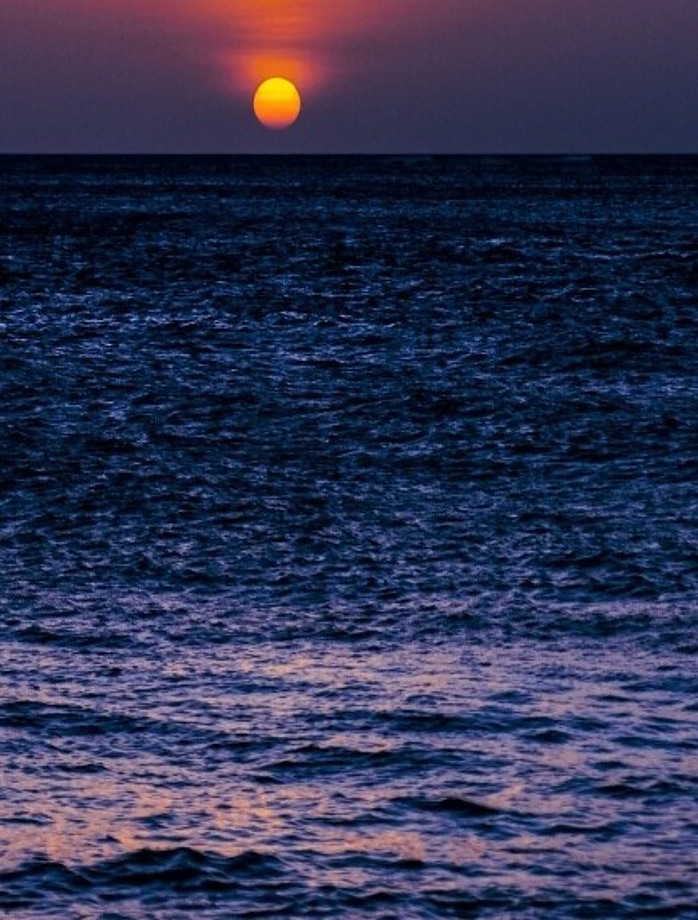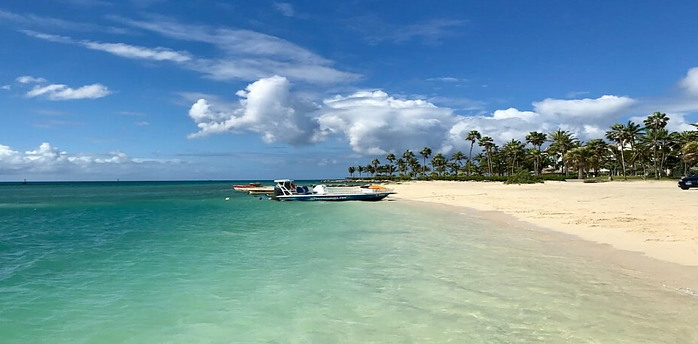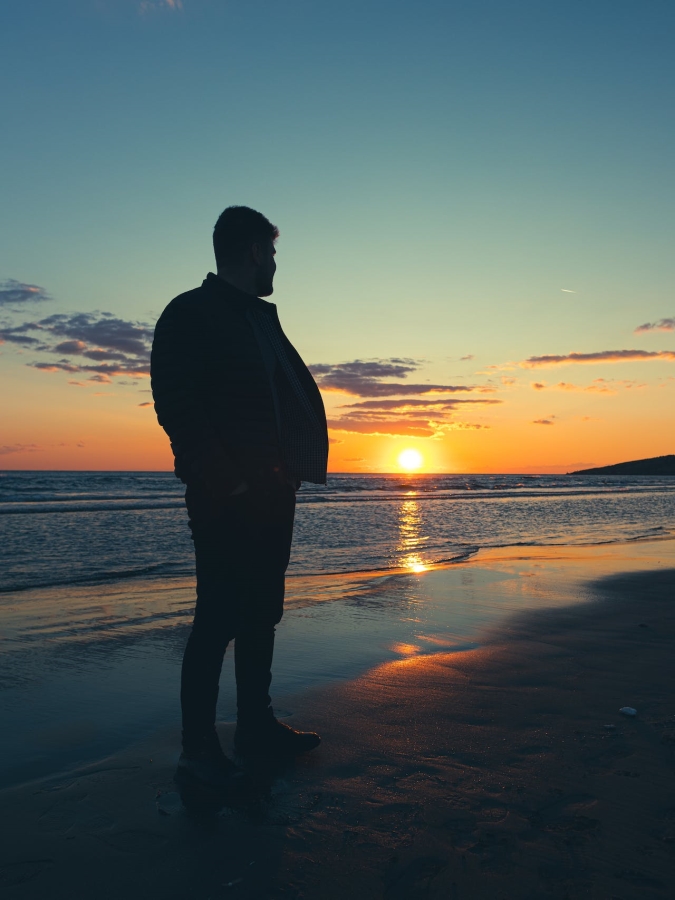Why visit Aruba? Let’s discuss some details of why spending time on this Caribbean island can be an enjoyable experience. It is located just off the coast of Venezuela.
With its gentle surf and very fine-grained sandy beaches, there is much to see and do as the prevalent trade winds supply a cool breeze throughout the island. It is a satellite nation of the Dutch so it has a strong European influence in its architecture and culture.
Why Visit Aruba? Some History of the Island
Dating back to the prehistoric era, this area was based on a food economy that included hunting, fishing, and gathering while focusing specifically on marine resources. Tools and weapons were crafted from stone.
The shape and finishing techniques used on some of the tools date back to 2000 BC. In fact thirty-three (33) archaic age sites have been found on Aruba.
Around 950 AD the archaic population disappeared. This was when the Caquetio natives arrived from northwestern Venezuela to avoid being enslaved by the Spaniards. They possessed a superior culture in both technological and socio-economic terms.
While searching for the southern route to India, Christopher Columbus. on his third (3rd) voyage to the New World, explored Eastern Venezuela. He thought that he had discovered a peninsula of Inda.
The Caquetio population became part of the Spanish Colonial Empire in 1500. Their islands were depopulated and they became forced laborers. Over time the appropriating of the Caribbean region was a failure for the Spaniards.
The Dutch entered the region in the seventeenth (17th) century. Great Britain controlled the island from 1806 to 1816 during the Napoleonic Wars. The economy grew at this time with the aloe vera industry as well as phosphate and gold.
The first oil refinery was built in 1924 processing oil from the Venezuelan oil fields. It became one of the largest refineries in the world.
In 1940 during World War II the oil facilities were overseen by the Dutch government in exile in London. In 1947 Aruba became an autonomous state within the Kingdom of the Netherlands.
In 1986 it became a constituent country within the Kingdom of the Netherlands and was then called the Country of Aruba.
A Few Facts About Aruba
- Aruba is part of the ABC islands along with Bonaire and Curacao
- Its citizens have Dutch nationality status
- The island has a dry climate with warm weather throughout the year. It’s considered a hot semi-arid climate.
- The name Aruba most probably came from “Oruba”, a Caquetian term for “Well situated island”
- Aruba is located 48 miles (77 km) west of Curacao
- The island has a variety of flora and fauna. The symbol of the aloe vera plant is on the country’s Coat of Arms due to its economic significance.
- 66% of the population is Aruban
- The official languages are Dutch and Papiamento, a Spanish-Portuguese Creole language
- The prevalent religion is Roman Catholic
- The legal system is based on the Dutch model
- It is one of the Overseas Countries and Territories (OCT) of the European Union
- The educational system is structured by the Dutch model
- The four (4) main industries are petroleum refining, tourism, offshore banking, and aloe vera export
- The currency is the Aruban Florin ( 1 Forin=0 .55 USD)
- It is a diverse culture with over ninety (90) nationalities
- The architecture is Dutch colonial style with some Spanish influence
- Queen Beatrix International Airport is located near Oranjestad
- There are four (4) seaports as well as bus and streetcar service
Why Visit Aruba? Things to Do
- Check Out the Beaches — Eagle Beach is a great place to watch the sunset. Baby Beach is one of the least crowded beaches and is great for sunbathing, swimming, and snorkeling. Hadicurari Beach and Boca Grandi Beach are on the southeastern side of the island and are great for surfing. Manchebo Beach, on the western part of the island, is a beautiful white sand beach with crystal blue waters that has fewer people and is great to watch a sunset. On the east coast is Andicuri Beach which is considered the best place to surf on the island.
- The Natural Cave Pool — this is a spot that locals frequent and has a ladder to take down to the pool. It’s much less touristy here and a bit more rugged experience. It is rocky so wear water shoes. There is an incredible view from the pool of the choppy sea.
- The Trinity/Tripod Bridge — this is a natural bridge with three (3) arches and first thing in the morning it is a fantastic place to watch the sunrise.
- The Divi-Divi Trees — these unique-looking trees can be found on Eagle Beach.
- Arikok National Park — there are several tours you can take such as visiting the caves, the Ayo Rock Formations, and other areas that can be explored on the rocky roads in a jeep.
- Bushiribana Gold Smelter Ruins — is a remnant of Aruba’s Gold Rush days and is just up the road from the Ostrich Farm.
- Guadirikiri Cave — this location is part of one of the jeep tours in Arikok National Park. Midday is a good time to explore this area.
- Casibari Rock Formation — right in the island’s center is this historic site with amazing views. This 65 million-year rock formation has a cactus garden and an incredible view of Hooiberg Mountain.
- Natural Pools — the rocks form a natural jacuzzi to swim and float as the waves crash against the rocks. There’s also a surf spot close by.
- Donkey Sanctuary — established in 1997 it has 130 donkeys and a visitor center with the history of donkeys on the island.
- Scuba Diving and Snorkeling –there are several dive sites not too deep and close to shore. There are several wrecks in the waters including a plane. Tres Trapi has white sand, crystal water, and a variety of tropical fish and turtles. It is a great place to dive or snorkel. It is near Palm Beach.
- SUP Yoga — yoga on stand-up paddle boards is quite an experience on the clear blue waters.
- Skydiving — for the adventurous at heart this can be quite an experience.
- The Flamingos — although not native to Aruba, they can be found on Renaissance Island.
- San Nicolas Lighthouse — a great place to hike along the rocks and natural arches and float in the natural pools.
- Windsurf and Kitesurf — on the southeastern side of the island the wind is strong and the surf larger. The best places are Boca Grandi and Hadicurari beaches.
- The Murals — downtown you will find colorful houses and plenty of murals. Stop at the visitor center and get a map of the murals.
- The California Lighthouse — great to watch a sunset here as it is high up on the island. It’s near Palm Beach where the majority of the hotels are located. The California Sand Dunes are nearby. This is also a good area to stargaze as well.
- Mangel Halto — this is a secluded beach with great sunsets and an ideal place to snorkel.
- Surfing — there are several great places to surf as previously mentioned, but for the best surfing check out Andicuri Beach on the east coast of Aruba. Aruba Surf and Paddle School can get you all set up.
- The Wariruri Bridge — this is the largest natural bridge on the island. Take a drive along the east coast of the island and you’ll run into this spot.
- Spa del Sol — here you get the total spa experience with aromatherapy massage, volcano scrub and wrap, pedicure, manicure, facial, and then lunch. It’s located at the Manchebo Resort and Spa.
- Hiking — there are many good places to hike on the island, andthere are many cacti along the trails on this desert island. Early mornings are good to avoid the heat.
- Culinary Delights — Senses Fine Dining is an out-of-the-ordinary dining experience as you sit at a table facing the kitchen as Chef Kelt details each course of the meal.
- A Jeep Adventure — rent a jeep and check out the north and east coasts of the island. It allows folks to explore parts of the island not seen by the average tourist.
- Horseback Riding — Dos Playa is near the Natural Pool where the horses frequent and is a great place to horseback ride along the beach.
- Boat Cruise — departing from Palm Beach is a sunset cruise that explores the shipwreck sites and provides refreshments as you cruise the coast.
Why Visit Aruba? — Lots of Reasons
There are so many reasons to visit this island paradise as mentioned above. Great sites, fine dining, fascinating culture, white sand beaches, adventurous activities, great nightlife, and numerous attractions are just a few.
Although there are several places to stay that will accommodate your budget, two of the nicer places are the Boardwalk Boutique Hotel on Palm Beach, and the Manchebo Resort and Spa. The Manchebo has a very quiet and gorgeous beach facing west for incredible sunsets, and also a spa, yoga classes, and pilates classes.
At the Boardwalk you get an entire apartment with a bedroom, kitchen, living room, and patio. It’s a smaller resort with much individual attention given. It’s near the activities of Palm Beach.
Here is some additional information on accommodations in Aruba. There are places to stay on the beach as well as in more residential areas where it is less touristy and allows hanging with the locals.
Just off the coast of South America, this island just may be the place for your next relaxing vacation.
Happy travels,
Joseph William



Thank you for the detailed insights into Aruba’s rich history and the plethora of activities it offers! The natural wonders, diverse culture, and adventurous opportunities make it an enticing destination. I’m a little nervous, but I’m actually planning to visit soon and look forward to exploring the unique experiences mentioned. 🌴🌅
Thanks, Ronald. Have a great time when you visit.
This is funny, I never even realized that in Aruba, people are Dutch-speaking. My actual mother tongue is Dutch, and I didn’t even know this. Maybe that’s because it wasn’t a colony from my country Belgium, but the Netherlands had something to do with it, although not an actual colony it seems?
Interesting country and region surrounding it, and I bet that nature there is amazing as well, thanks for the insights
Aruba is now on my bucket list!
Lizzy
Thanks, Lizzy. I am glad that you enjoyed the article. All the very best. Joseph
Hi Joseph, I watched the Youtube video you shared Aruba looks beautiful. I have seen flights deals there. Maybe I will go if I can afford it one day. I thought it was Central America in the Caribbean? I guess it must be near here but anyway great post. Thanks for sharing.
Thanks, Alex. Appreciate your thoughts and comments. It’s right off the coast of South America in the Caribbean. Off of Venezuela. All the best.
Hey Joseph,
Your rundown on Aruba is fantastic! The historical journey from the Caquetio natives to Dutch influence and the modern era is captivating. The mix of architectural styles and the impact of the aloe vera industry create a rich narrative.
The facts about Aruba, from its climate to cultural diversity, provide a quick but comprehensive snapshot. The list of things to do is quite impressive – from serene beaches to adventurous activities like skydiving! Personal question: Any hidden gems or lesser-known spots you’d recommend exploring?
Your mention of the Boardwalk Boutique Hotel and Manchebo Resort and Spa adds a personal touch. Have you had a standout experience at any particular accommodation?
Thanks for sharing the multitude of reasons to visit Aruba, Joseph. It’s now firmly on my travel radar!
Thanks, Chas. Appreciate your thoughts. There are many hidden gems to explore and a variety of accommodations depending on preference. I prefer away from the tourist crowds and hanging with the locals. All the best.